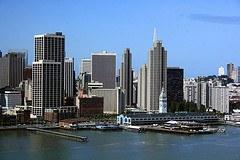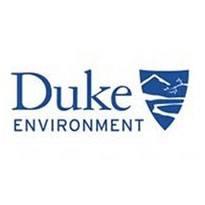Massachusetts Governor Unveils State Climate Action Plan


Massachusetts has a ver populated coastline which also happens to be at risk for both flooding and sea level rise. In fact, the state has been hit by five major storms since 2010, including Hurricane Sandy. Some in Massachusetts are calling the damage done to coastal New Jersey and parts of New York City by Hurricane Sandy a "preview of what Massachusetts will face sometime in the future," reports the newspaper The Lowell Sun.
Massachusetts is also a state that is preparing for the damage climate change can cause. On Jan. 14, Massachusetts Gov. Deval Patrick announced a $50 million investment for a statewide climate change plan.
The climate change plan will both assess and address the state’s vulnerabilities when it comes to public health, transportation, energy and the built environment. Part of the plan is a $40 million municipal resilience grant program which the Massachusetts Department of Energy Resources (DOER) will administer. It will allow cities and towns to improve energy services at critical sites using clean energy technology.
The grants will be funded through alternative compliance payments (ACP), paid by electric retail suppliers if they lack renewable or alternative energy certificates to meet their compliance obligations under the state's Renewable and Alternative Portfolio Standard programs. The remaining $10 million will be invested in coastal infrastructure and dam repair, including $1 million in municipal grants from the Office of Coastal Zone Management. In addition to the $50 million investment, the governor will "seek $2 million in the Fiscal Year 2015 budget to accomplish the remaining interagency efforts," according to a statement.
Here are some of the details for how the $50 million will be invested to prepare Massachusetts for the damage done by climate change:
- The Executive Office of Energy and Environmental Affairs (EEA) will create an inventory of the vulnerabilities and preparedness plans of electricity generation facilities, and the Department of Public Utilities (DPU) will work with utilities to find ways to deploy micro-grids and resiliency projects for transmission and distribution.
- The Massachusetts Department of Transportation (MassDOT) will conduct a statewide vulnerability assessment for all facilities and adopt climate adaptation plans by 2015.
- The MassDot secretary will create an internal working group which will advise on the next steps and work with stakeholders.
- The Department of Conservation and Recreation (DCR) owns and operates some historic parkways and roadways that are vulnerable to flooding and sea level rise. Under the plan, the DCR will conduct an assessment to figure out just how vulnerable its parkways and roadways are to flooding and sea level rise.
- Massachusetts Emergency Management Agency (MEMA) planners will be required to advise on hazards and resiliency in order to decrease long-term risk. MEMA will also be required to share hazard data to be used in building assessments.
Clearly, Gov. Patrick takes climate change seriously. In 2008, the governor signed the Global Warming Solutions Act into law, which targets a 25 percent reduction in greenhouse gas emissions from 1990 levels by 2020 and at least an 80 percent reduction by 2050. Last year, he announced the state’s Accelerated Energy Program, which has the goal of reducing energy use by 20 to 25 percent over 700 state sites.
Image credit: Jeff Cutler
Why Collaboration is the Foundation of a Sustainable Future


By Joanne Sonenshine
My children will face one of two scenarios when they reach my age in 2050.
Either they will have to relocate north to escape burning temperatures in our home state of Virginia, pay high value for water given its near lack of existence and consume chemically produced food due to lack of land for agriculture, or (and hopefully more realistically) they are part of a generation that has finally figured out how to sustain our planet, feed the 9 billion people who inhibit the earth and ensure economic advancement for even the most underserved.
I have spent my career building a case for the second scenario, trying to find the solutions now that will contribute to a positive, productive and safe future for our children and our planet. What is apparent in this quest is the need for urgent action to address the challenges we so often read about: increases in the number of people vulnerable to natural disasters, agricultural yields declining by 50 percent and water nearly unattainable for all of Africa. Where will the change come from? Who will be the lasting leaders?
The rise of the partnership model
Over the last 25 years, we have seen a select group of leaders make bold commitments to address the urgent social, environmental and economic crises of our time. As early as 1990 -- when environmental action was saved for protesters, and social action was left for governments to grapple with -- one company decided to make a change that ultimately led us down the path of corporate sustainability and societal change.
After facing harsh criticism from the general public over the mounting waste caused by the fast food industry, much of it non-recyclable, McDonald's turned to the Environmental Defense Fund (EDF) to analyze its packaging problems and develop effective solutions. In 1991, McDonald’s announced a massive overhaul to its packaging and waste program and eliminated more than 300 million pounds of packaging over the course of the next decade.
As a result of the packaging changes, McDonald’s also saved an estimated $6 million per year. This effort on the part of one company to identify a problem bigger than its own (i.e. trash and waste), find a partner in a nonprofit organization that was willing to engage and not turn away, and set an example for others to follow (which they did - including Coca Cola, which became the first company to use food-grade recycled PET plastic—known as rPET—in its packaging) was a first.
These collective actions led us into the current era of corporate social responsibility (CSR) -- where companies recognize their own self-interest in the social, economic and environmental benefits of ensuring a safe and healthier future for our planet. We have seen movement away from businesses whose only goals are to achieve financial profits and towards a scenario where businesses see incremental value in the leadership notoriety born of the responsibility for solving some of our most complex global problems.
Green Mountain Coffee Roasters (GMCR) has taken the partnership model one step further. Having grown from a single coffee shop in Vermont to a multi-billion dollar beverage conglomerate over just three decades, they have identified ways to scale impact working with a series of partners. They have built a culture of giving back, dedicating a portion of pre-tax earnings each year to support social and environmental initiatives related to either areas of operation or programs in coffee origin communities. What they have recognized, however, is that in order to make true impact with these dollars, they need more help.
For example, together with several other roasters, GMCR is leading an effort to combat malnourishment and access to food in Latin America, which in turn keeps farmers healthy, happy and growing coffee for years to come. What GMCR has done is declare leadership by admitting that for true impact, environmental, social and economic commitments cannot be achievable by their company alone. They must include the involvement of others. Change must come over and over again in different shades and across different sectors.
Coming together for collective impact
This notion of businesses, governments, NGOs and others coming together to join forces for major impact is a term making a lot of traction in the CSR space. "Collective Impact." It’s how leaders (or "change agents") come together to create change and amplify at the scale and pace necessary to meet the needs of people beyond 2050.
In 2009, 29 members of the World Business Council for Sustainable Development (WBCSD) released Vision 2050, a report addressing the growing problems we face as our population swells to almost unbearable limits and as our planet is tested by extreme environmental and economic challenges. Within the last few months, the Vision 2050 group recognized that the report alone is not sufficient. Change will only come from action.
Thus, the Action 2020 program has begun, led by business leaders keen to deliver on the goals set in the Vision 2050 report. According to the WBCSD, the effort "symbolize[s] the WBCSD’s move from developing thought leadership to driving action." This effort is collective impact at its finest. Companies breaking down silos, sharing information and ideas, and initiating joint efforts for larger global benefit economically, environmentally and socially.
Ultimately, collective impact helps companies see positive returns on their bottom lines as well. For example, Nestlé, the largest nutrition company in the world, has recognized that by sharing information and calling upon its competitors to join forces collegially to address critical issues like deforestation and sustainable sourcing, the impact on all business bottom lines will be positive. In particular, Nestlé "engage[s] and work[s] with external stakeholders on sustainability topics to ensure that [they] have the best knowledge and understanding to help…operational teams across the world." Companies like Nestlé are keen to move the needle.
Looking forward to 2050
It is thrilling to see this shift in business mentality. But more leaders are needed. While we have gained much in the CSR space in the last 25 years, the future of our planet is in question. With only 36 years until 2050, we have little time to waste.
I have heard a lot of talk about the need for "pre-competitive" action and joint ventures for improving inefficiencies across industry sectors, but I am not actually seeing much action. If we want to halt climate change, ensure future access to water, develop technologies to maintain food security and mitigate disease, we need to get moving.
Let's start walking the walk.
So how does an organization involve itself in collective impact? To get started, an organization must prioritize its goals and understand the space in which its goals are achievable. Next, it is critical to determine whether the goals can be achieved alone or are dependent on others. I would argue that almost always, true aspirational social impact goals must involve others. Next is one of the more difficult steps. Organizations need to understand the other players and their roles. Who are potential collaborators? What groups are already out there? Where is the best place to start the effort? At this stage, finding an appropriate connector to coordinate teams, develop strategies around collective impact and measure impact is critical.
In my more than 15 years working with companies and other organizations around corporate social responsibility, environmental impact and sustainability, what I notice time and again is the fortitude born by group action. We need to know who is out there, what they are doing and how we can contribute to each other’s’ missions. We need to make strong linkages and find the right chains to attach ourselves to. It’s about collective impact. It’s about ensuring the future not just for the good of the planet and its inhabitants, but for the bottom line.
Image: School children returning to their families' coffee farms in Northern Sumatra, Indonesia
Joanne Sonenshine is Founder + CEO at Connective Impact, aiding organizations in strategic goal development, partnership creation, consensus building and focused thinking in order to solve some of the most complex problems of our time.
Southwest Airlines in Hot Water Over Seaworld Blackfish Controversy


Despite apparent record profits, SeaWorld is in the thick of an emotional controversy about the ethics of keeping dolphins and whales in captivity for the purpose of putting on shows. It all stems from last fall's documentary, Blackfish, which depicts the life of Tilikum, a captive orca who has killed three people over the years. The film alleges his behavior is the result of psychological trauma brought on by being in captivity and goes on to discuss many other ethical downsides to whale and dolphin shows.
Let me get my bias right out on the table - I think dolphin and orca shows are ridiculous, though I'm willing to give SeaWorld the benefit of the doubt that they have at least a modicum of conservational value somewhere buried between the roller coasters and popcorn stands. SeaWorld does make some effort to create an educational experience for visitors, but it is definitely not a zoo. Its primary mission is entertaining and making money.
However, this post is about Southwest Airlines, one of SeaWorld's promotional partners and the latest target of attention by folks rallying to put a stop to cetacean captivity performances. The hope is that pressure on Southwest will reach SeaWorld.
For years, Southwest Airlines has been a marketing parter for Sea World, decorating planes in "Shamu" colors. With a huge presence in Orlando and San Diego, the partnership likely drives a lot of business for the airline. Southwest also has a very good reputation for CSR - in particular employee engagement and listening to customers as well as integrated GRI reporting. Much of this is manifested on Southwest's very good blog.
Southwest's response (so far) has been first rate - a non defensive blog post, openly acknowledging the concerns of the thousands of people who have been in touch with the airline. Most importantly, Southwest is taking comments on the post, and does not seem to be censoring critical comments. The result is a dialogue that has remained civil and constructive.
As of today's writing the post makes no commitment to alter Southwest's marketing relationship with SeaWorld, but with more and more attention piling on the issue - not to mention Blackfish's likely position as an Academy Award nominee - this is certainly not the last communication we're likely to hear from them.
The question is what happens next? It may seem a bit unfair for Southwest to be held responsible for something that is not directly under their control. But with rising concern about their partner's behavior, the pressure is on to take a stance one way or another.
Personally, I'd love to see Southwest drop SeaWorld, make a nice donation to Conservation International and keep their orcas flying. Just rename them something other than Shamu. But at the end of the day, the company will walk a fine line judging the volume of protests with the possibility of lost business with a dose of their own ethics. However it plays out, it will be a very interesting decision to watch.
Rigged poll in Orlando Sentinel
Image c/o Southwest
How Cities Can Address the Critical Need for Sustainable Development


As a lead-up to Abu Dhabi Sustainability Week, Jan. 18-25, Masdar sponsored a blogging contest called “Engage: Cities and Sustainable Development.” The following post was a runner-up.
By Mauro Small
Sustainable cities, or “smart” cities, focus economic and technological resources on conserving water, improving energy efficiency, reducing waste and enhancing their citizens’ quality of life. Innovations for renewable energy, the development of efficient waste management systems and community planning for smart growth ensure the viability of cities for years to come.
Critical Water Conservation Planning
Cities striving for sustainability must address water supply issues based on population demand. According to the United Nations, a 3-4 degree Celsius rise in global temperatures by 2080 could place an additional 1.8 billion people in water-scarce environments. Municipalities must be able to maintain freshwater resources through conservation, treatment and recycling.
The city of Philadelphia has made inroads toward water sustainability through its “Green City, Clean Waters” plan. One of its goals is to protect the municipal water supply from stormwater runoff pollution. The plan calls for green, low-impact development to limit paved areas, which block runoff absorption. Additionally, Philadelphia has formally partnered with the EPA to develop new water handling strategies based on hydrologic and hydraulic models.
Long-Term Energy Efficiency
Smart cities focus on increasing both municipal and residential energy efficiency. Not only does this save money, but it also reduces air pollution and greenhouse gas (GHG) emissions, makes progress toward energy stability and independence, and creates new jobs.
Vienna, Austria, is well on its way on becoming a model city for sustainable development. Its goal is an 80 percent reduction in CO2 emissions by the year 2050. District heating systems that supply multiple end-users with heat and electricity are already in place. Additionally, Vienna’s energy efficiency standards for new construction are among the most stringent worldwide. The city is already a champion for ultra-low- energy housing.
Renewable Energy for Future Security
By developing renewable energy facilities, cities without domestic sources of oil, natural gas and coal can increase their future energy security and decrease their GHG emissions. Munich, Germany, has established a renewable energy program called “100 percent Green Power,” setting a goal of meeting all of the city’s energy requirements by 2025 with locally generated, green energy. The city plans to tap into hydro, solar, biomass, geothermal and wind energy to supply its electric needs.
Sustainable Solid Waste Management
To achieve a state of sustainability, cities must develop effective waste management practices. According to the EPA, the volume of waste in the U.S. alone increased 184 percent between 1960 and 2010.
San Francisco’s Zero Waste Program has set a goal of zero solid waste generation by 2020. By implementing strict waste reduction measures and actively creating a recycling and composting-friendly culture within the city, San Francisco has increased its rate of recycling to 80 percent.
Community Planning for Smart Growth
Planning for smart municipal growth is crucial for achieving long term sustainability. Affordable, energy efficient housing, and green spaces are components of sustainable cities in the future. In Paris, this vision is already taking shape at Parc Clichy-Batignolles, a 133-acre development in the 17th arrondissement. The city has reclaimed land formerly used as railroad freight yards to build a sustainable community. The central park features low maintenance plants, wind turbines, solar collectors and a rainwater harvesting system.
Building sustainability into a city’s infrastructure creates long-term livability, jobs and increases the quality of life. Planning for a low carbon future, while preserving resources such as water and green space, is critical in terms of meeting the challenges of climate change and population growth.
The examples listed above are real-life projects for how cities can actively solve the problem of accommodating a large population while using fewer resources.
Image credit: Flickr/photographerglen
Mauro Small is an Energy Engineer based in Berlin, Germany.
Policy Points: If Properly Managed, (Federal) Debt is Good


By Richard Eidlin
Some policymakers are concerned about the dangers of adding to the national debt and don’t want to raise the debt ceiling, which the nation will hit on Feb. 7. They say it’s just not sustainable.
Surely, there’s such a thing as too much debt, and there are some things for which we shouldn’t borrow. But debt is not always bad. It all depends on what it is used for and how it is managed. If the reasons and the goals are sound, debt can be good -- really good.
This is something business owners understand particularly well. For a business, the typical goal is increased profits down the road. But what are the right goals for federal debt?
Our national debt was originally created to pay the costs of the American Revolution. More recently, federal debt financed our rail system, as well as World War II, and rescued the economy from the financial crisis of 2009. These have all paid off handsomely.
Today, we have an opportunity to move our economy to one that is more sustainable -- one that protects the planet and ensures that everyone is able to share in both producing and benefiting from a growing economy. This will not be quick or easy, but it could be enhanced significantly by government investment. From this perspective, it’s not that our national debt is unsustainable, but rather that it's a main goal for taking on additional debt needed to build a sustainable economy.
As with a business, founding a country or making strategic investments for a country’s future means incurring significant costs -- but the payoff can be extraordinary.
"Debt can be powerful fuel for starting or growing a company," says Denise Bowyer, vice president at American Income Life (AIL), based in Waco, Texas. AIL was founded with $25,000 in borrowed funds and is now a billion-dollar company employing thousands of people. "Those opportunities would not be available if it weren’t for debt," Bowyer explains.
We have seen the same in our nation's past. The Interstate Highway system, which cost $425 billion to build (in 2006 dollars), created $6 in economic productivity for each dollar spent, according to one estimate. The 2009 stimulus bill added as many as 3.3 million jobs and helped boost the economy at a time when a jolt was desperately needed. Perhaps the best example was the New Deal, which created millions of jobs during the worst slowdown in our history.
All of these programs cost money. At least some of that money was borrowed. But how much real value did they produce for the economy? And how much better off would we be, both now and years in the future, if we borrowed money and invested it in renewable energy, high speed rail, worker training or regulations that support innovation in industries to make sure we have good jobs and safe products for generations to come?
Bowyer explains that investments in programs like early childhood education and job training will move us closer to a sustainable economy. "The currently shrinking middle class can best be halted through policies that support higher learning and higher earning. Future workers earning more money and having the ability to compete is one of the best investments we can make," she says.
The national debt has been a constant throughout our existence. The highest our debt has ever been, as a percentage of GDP, was 112 percent at the end of World War II. Today, it stands at about 73 percent of total GDP. Overall, the United States has only been debt-free for one year in its history, and that ended quickly due to a recession.
Of course, not all debt undertaken by the federal government will have a positive impact on building a sustainable economy. Policymakers should always be looking for smart ways to reduce debt. For example, one bill on Capitol Hill that would close several offshore tax loopholes could bring in $220 billion in revenue over 10 years. Ending subsidies to oil companies could bring in billions more. Cutting defense programs that are ludicrously over-budget could also help, as would cutting subsidies to commodity food producers. These can all help slow the rise of our national debt and free funding for smarter, more strategic purposes that we can all get behind.
"Debt is not itself inherently evil," says Josh Knauer, president and CEO of Rhiza Labs, a software company in Pittsburgh, Pa. "Debt can be a very valuable business tool to use to acquire the capital needed for growth. Borrowing within reasonable limits makes a lot of sense for businesses and the government."
Building a sustainable economy will require the government to take on debt. We just need to make sure those financial obligations are for truly worthy and sustainable initiatives.
Image credit: Flickr/woodleywonderworks
Policy Points is produced by the American Sustainable Business Council. The editor is Richard Eidlin, Director – Public Policy and Business Engagement.
Co-op first to offer compostable carrier bags in UK


Compostable carrier bags, which can be used to carry shopping home and then be re-used as food waste caddy liners, are being rolled out to customers at around 400 Co-operative food stores in the UK.
The bags, which cost 6p, are now available in 81 local authority areas with food recycling schemes which require householders to use compostable bags for food waste.
The Co-operative Food’s Environment Manager, Iain Ferguson, said: “Every compostable carrier bag used is one less conventional plastic shopping bag in circulation. We believe they will have a significant impact upon the number of plastic bags which end up in landfill sites every year.”
The new compostable carrier bags, which carry the seedling logo and are certified to the EN13432 standard, are made from a combination of natural materials. They are strong enough to carry home the weekly shopping, including heavy, bulky items such as milk and potatoes. However, unlike conventional traditional plastic equivalents, they have also been approved for use as waste food bin liners.
3p Twitter Chat Summary: Duke Environmental Leadership Program


TriplePundit readers worldwide joined up for an hour-long Twitter chat with the Duke Environmental Leadership Program. The chat was co-hosted by Professor Deb Gallagher, Associate Professor of the Practice of Resource and Environmental Policy.
Environmental leadership is a skill required by every organization in today’s modern world. No longer is environmentalism relegated to the NGO world - industry, government, and civil society all must be environmental leaders in order to solve the world’s greatest challenges. Now more than ever, in order to address sustainability and the need to make businesses and organizations thrive into the future, we need a new model that puts environmental problems - and solutions - at the forefront. Join us to discuss what it means to be an environmental leader and how to get there with the Duke Environmental Leadership Program.
If you missed the chat, catch the Storify summary here:http://storify.com/triplepundit/duke-environmental-leadership-program-on-environm
Boosting Security in the Mobile-for-Good Space


It seems as if high-profile privacy breaches are everywhere in the news these days. Snapchat made headlines earlier this year when hackers downloaded the phone numbers and usernames for as many as 4.6 million users, and the most recent data suggests that Target's December security lapse could affect up to one-third of the U.S. population.
With privacy issues still fresh in our minds, Deb Levine - founder and president of YTH, (which stands for youth+tech+health), the partner of choice for developing, evaluating and refining technology solutions that advance youth health and wellness, is bringing the conversation into another arena: mobile technology in the social good space. YTH has piloted dozens of mobile apps and text messaging services since its inception more than a decade ago - each tailored to the needs of specific groups of young people.
Its first endeavor in the mobile arena, SexINFO, was the first text messaging service ever created in the U.S. Originally developed to help the city of San Francisco quell a gonorrhea outbreak in local public schools, the service served its purpose and served it well. During the pilot phase, the organization observed a significant drop in gonorrhea rates, indicating that students used the service to obtain necessary information and get tested for the disease. As mobile technology advanced, YTH advised on two more modern services - Crisis Text Line and PPInfo - that provide similar information to young people across the country.
When handling such sensitive data, it's no surprise that privacy is a top concern for Levine. YTH entered the mobile space just as cell phones were starting to become ubiquitous, so their experience gives them a pretty good grasp on best practices when it comes to security, she told TriplePundit. But many nonprofits and social good organizations that aren't as familiar with security may be unknowingly putting users' data at risk.
"We really realized that a lot of startups and entrepreneurs and social good organizations have been venturing into the mobile app space," Levine said. "A lot of times they're dealing with very sensitive information and are not as savvy or thoughtful preemptively about the users of their technology, their privacy and their rights."
To boost security awareness in the mobile for good space, YTH is teaming up with the Vodafone Americas Foundation, Ford Foundation and ACLU of Northern California to compile research-based resources for nonprofits and social good organizations that are interested in developing mobile apps, text messaging services and mobile-first websites. The organizations already published a one-pager on mobile apps specifically for nonprofits, but Levine notes that privacy is equally important with something as seemingly simple as a text message line - calling text messaging "the universal app."
Maintaining security while doing good
If you're curious about what privacy best practices look like in the mobile space, take a look at the award-winning Circle of 6 app. Developed by YTH and recently transferred to the nonprofit Tech for Good, the app allows college students to select six people from their contact lists who will come to their aid in uncomfortable or potentially dangerous situations. After a user selects their "circle," he or she can reach out to chosen friends and relatives with one click in a perilous situation related to sexual assault or domestic violence.
The app clearly performs a crucial service and even won awards from the White House for its role in preventing sexual assault and domestic violence among young people, but privacy remained a key component in every step of the development process. When downloading the app, users are presented with a privacy policy in clear English - a refreshing departure from 10-page terms of service written in legalese - that tells them exactly when the app will access their contact list and GPS location. The app only accesses and retains the minimum user information necessary to function, and it does not share, sell or otherwise use that information except in performance of the app.
"Apps leave digital footprints for sure," Levine explained. "We were very careful to make sure that when you download the app, each user has to opt-in and consent to access their contact book, or their contact list, and also to access their GPS location."
Other YTH mobile services, such as Unete Latina - a text messaging service that connects Latina immigrants of all ages to Spanish-friendly health care and domestic violence services - also contain key privacy provisions to keep users' data safe.
Advice for social good organizations
Every app and mobile service requires some access to users' data to function properly, but notifying users in clear and direct language about how this data will be used can go a long way, Levine said. One simple thing nonprofits and social good agencies can do is to reduce long and wordy privacy statements - which are almost always ignored by users - to a simple text message detailing how and when personal information will be used, Levine advised.
"It's just being really clear and upfront about use of the data," Levine said. "Obviously we all have to have privacy statements on our websites and as part of our apps, but for the user interface [it's important] to really be clear up front."
After data use is made clear to users, it's then up to the organization to follow up with developers and make sure privacy guidelines are being strictly adhered to.
"You have to check with your developers and be sure that they're not checking off boxes that say that the data can be saved or the data can be used, let's say, by Android or by Apple for other purposes," she explained.
YTH will continue to work with Vodafone Americas Foundation this year to develop additional fact sheets around text messaging services, mobile websites and apps for nonprofits, startups and social good organizations. The organization will also disseminate findings on privacy at its annual conference, YTH Live, April 6–8 at the Hotel Kabuki in San Francisco.
Ed note: Vodafone Americas Foundation’s annual Wireless Innovation Project is now accepting grant applications from top innovators in the mobile technology field that have the potential to make a decisive change in the world. Applications for 2014 are due February 3rd!
Image of mobile phone courtesy of Vodafone
Image of youth at YTH Live 2013 courtesy of YTH
Based in Philadelphia, Mary Mazzoni is an editor at TriplePundit. She is also a freelance journalist who frequently writes about sustainability, corporate social responsibility and clean tech. Her work has appeared on the Huffington Post, Sustainable Brands, Earth911 and The Daily Meal. You can follow her on Twitter @mary_mazzoni.
Money from ExxonMobil – Who's Hoaxing Who?


ExxonMobil is not the kind of company that throws money away. There’s always a plan behind its largesse.
When the oil giant stepped into a small Brooklyn library’s crowd-funding campaign in a big way, suspicions immediately arose about the motives of both sides—including whether Mellow Pages should accept the donation, and even whether it was real—and a somewhat complicated view of life in 2014 ensued.
Mellow Pages is an independently-run library and reading room located in Brooklyn, NY; it focuses on providing limited-print fiction and poetry to the neighborhoods of Bushwick, East Williamsburg and Bedford-Stuyvesant.
The story of how this unlikely pair found each other was told in a recent article in The Awl.
Mellow Pages, which was founded less than a year ago, has some 200 members who pay a small membership fee to help support its operation. Last fall the library held a $20,000 Indiegogo crowd-funding campaign aiming to raise rent and carrying costs for one year, but the campaign came up well short at about $5,200. Then in December ExxonMobil suddenly appeared with a “strange email.” The company offered to support Mellow Pages for 10 times the amount of funding raised by Indiegogo, according to the library’s founders.
The article continues: “That inconceivable bequest of $50,000 would fund the library’s rent for three years. And the best part: there were no strings attached. The offer was that the corporation would pay rent directly to the building’s landlord and nothing more.”
Was this a prank? Should Mellow Pages accept oil money? And there has to be a catch involved somewhere, right? The Lady or the Tiger? Door A or Door B? If it sounds too good to be true, it’s usually not true, right? The question was opened to the membership and the readership community; many recommended the library should take the money and run, while others said to just run because there are always strings attached to corporate money.
Last Wednesday, Mellow Pages said they wouldn’t be accepting the money, according to a report in International Business Times.
“The truth would be that we were afforded freedom at the cost of something else: ideas,” library co-founders Jacob Perkins and Matt Nelson wrote in a letter. “The amount of people within the community who want to figure out ways that this can be sidestepped or avoided is immense. We basically turn it inside-out by saying no.”
End of a weird encounter? Well no, it turns out that it gets even weirder: Exxon never offered the money.
"We have no record of any interaction whatsoever with this library," ExxonMobil spokesman Richard D. Keil was quoted in an email to IBT. "We first heard of this through media inquiries." He added, "The funding scenario the library describes in no way comports with the open and transparent way in which we make charitable and philanthropic donations."
Last Friday, the library finally fessed up: Perkins admitted the whole thing was a publicity stunt to a Brokelyn reporter, and "compared it to a rolling work of fiction that everyone was a part of."
It’s hard if not impossible to pull off a successful hoax when ExxonMobil is the target—after all, it is the expert at that sort of thing.
Image: Mellow Pages, from its website
Koch Connection to West Virginia Chemical Spill Company


A chemical spill in West Virginia last week cut off access to safe tap water across nine counties, and although it involved a chemical used by the coal industry, state officials have been pushing back strongly against suggestions by reporters that the disaster had anything to do with the state's dominant industry -- coal.
However, the fact is that the chemical industry is also very important to the West Virginia economy, and it is heavily entwined with the coal industry, which requires a substantial quantity of chemicals at various stages before it gets from the mine to its point of use.
Clearly, the spill -- which affected 300,000 people and shut down restaurants, schools, hospitals and hundreds of other businesses and institutions -- is closely related to the state's dependency on the coal industry, despite protestations to the contrary.
That, in turn, undermines the coal industry's insistent positioning of coal as a "clean" fuel. While new technology has reduced pollutants from burning coal, everything around the burn point is still status quo, from destructive mining to fly ash disposal.
With that scenario in mind, let's take a look at how the disaster is playing out in the local paper, the Charleston Gazette (highly recommended: follow reporter Ken Ward, Jr. on Twitter, @Kenwardjr).
The West Virginia chemical spill and the Koch connection
The industrialist Koch brothers have become notorious for their holdings in coal and other fossil fuels, their aggressive promotion of global warming denial and their efforts to monkeywrench environmental progress.
What hasn't garnered as much attention is their involvement in secondary industries on which the coal industry depends.
Charleston Gazette reporter David Gutman tracked down the Koch connection to the chemical spill in an article over the weekend titled "Freedom executive Kennedy had felonies."
The full article is worth a read for the insights it provides about the top executives for Freedom Industries, the company responsible for the spill, but the relevant detail involves the source of the company's chemicals.
The spill involved Crude MCHM, a foaming agent used to clean coal. According to Gutman, that's not the only coal-related chemical stored at Freedom Industries. The company is also a distributor for a line of coal processing chemicals called Talon, which is a product of the Koch company Georgia-Pacific Chemicals LLC.
Update 1:30PST 1/23: In 2008, GP selected Freedom Industries to distribute its Talon line of coal processing products, but Talon was not one of the products involved in the spill.
Update 8:40PST 1/23: Georgia Pacific has contacted us and many members of the media to let us know that none of their products were stored by Freedom Industries.
Nine counties, one water company
Another interesting coal-related point that has surfaced thanks to the Charleston Gazette is the trend toward greater reliance on a centralized, privately-owned water company in areas that traditionally relied on individual wells.
Reporter Ken Ward, Jr. provides a statement from the organization Appalachian Voices for some insight on that:
An increasing number of private wells in southwestern and central West Virginia, where the spill occurred, have been contaminated by decades of coal mining and processing. One result has been an ongoing expansion of municipal water systems to rural communities that would otherwise rely on well water.
A missed opportunity
Another key item unearthed by Ward occurred back in 2010, when the federally-managed U.S. Chemical Safety Board issued a set of urgent recommendations for state officials to improve the prevention of chemical accidents in the Kanawha Valley region, where Freedom Industries is located.
Here was the response, as reported by Ward:
...the proposal has gone nowhere. The state Department of Health and Human Resources hasn't stepped in to provide the legal authority the Kanawha-Charleston Health Department needs to start such a program. And Kanawha County officials never funded the plan, and seldom mention that the CSB recommendation was even made.
In terms of national news, the spill is already winding down, to the extent that Jason Linkins of The Huffington Post could find not one mention of it on the important Sunday morning news shows, although Bao-Bao, the new panda cub at the Smithsonian National Zoo, merited a mention.
However, the next time you see the words "clean coal," keep the West Virginia spill in mind.
Image (cropped): Georgia Pacific logo by dsearls